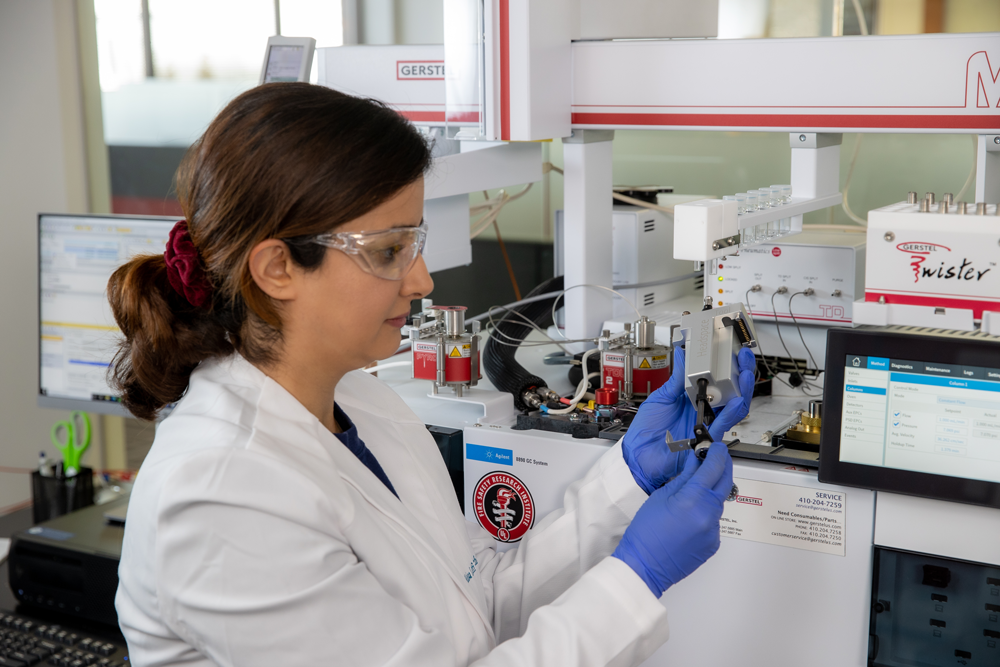
Analytical Chemistry: Understanding the Combustion Mechanisms of Synthetic Home Furnishings
The ways in which furniture, textiles, flooring and other construction materials decompose during a house fire varies from item to item. Underlying molecular differences lead to variations in how fast the furnishings burn, the chemicals released while burning, and if the material is inherently able to reduce itself from a flame to a smolder.
Understanding these differences can tell us so much about the severity of a fire and the toxicity of pyrolysis and combustion byproducts. Post-doctoral researcher, Mahsa Lotfi Marchoubeh, is hard at work in the Fire Safety Research Institute (FSRI), part of UL Research Institutes Columbia, MD, laboratory to understand the mechanisms by which these compounds burn and the consequential products of combustion. Her research on FSRI’s Thermal Decomposition of Materials project may ultimately result in changes to standards or codes in relation to the materials that may be used for a variety of home furnishing applications.
In traditional mid-century homes, furnishings were made of natural materials such as cotton, which is a cellulous natural polymer with strong chemical bonds and minimal flammability. The synthetic materials found in modern furnishings, such as polyurethane, behave differently in a fire. Synthetics, derived from petroleum, have weaker bonds and lower combustion energy and as a result, they are more flammable and release more energy as they burn. Composed primarily of complex molecules, synthetics produce toxic byproducts that are potentially hazardous for human health and the environment.

The gas chromatograph/mass spectrometer (GC/MS) is FSRI’s state-of-the-art instrument for separating and measuring chemical components of organic material. Small samples of different materials are placed in a controlled combustion chamber and heated at various temperatures. The gaseous products emitting from the sample are then automatically introduced into the GC/MS which separates and identifies the compounds. Using this technique, Lotfi Marchoubeh will perform a series of controlled experiments on microgram samples of typical home furnishings to examine the rate at which they fragment and create different compounds. “We’re creating situations in the lab that mimic the actual combustion in a home fire,” said Lotfi Marchoubeh. “Using the GC/MS, we can study how synthetic and natural materials decompose and learn more about their thermal profiles.”

“When we understand the compounds that exist and their generation pattern, we gain a molecular and mechanistic understanding of how they burn and the compounds generated in each stage of the combustion” added Lotfi Marchoubeh. “With that knowledge, FSRI can bring more awareness around the potential hazards of new furniture polymers in the household items – and ultimately inform safety decisions for homeowners, manufacturers, fire fighters and fire investigators.”

Read more about the Thermal Decomposition of Materials project.

